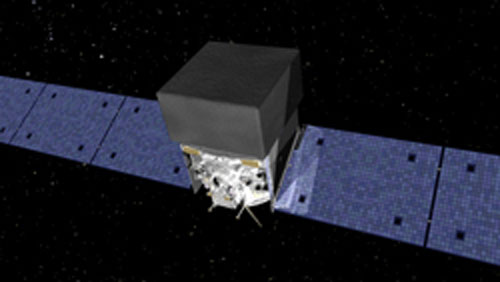Key Takeaways:
Researchers with the Kavli Institute for Particle Astrophysics and Cosmology (KIPAC) at Stanford University in Palo Alto, California, are confirming the previous detection, and the excess seems to grow at higher energies in the spectrum, which is consistent with many theories about how dark matter might produce positrons.
The KIPAC result comes with a major caveat, however, since those theories also predict that the positron signal should suddenly drop off in cosmic rays beyond a certain energy level. The KIPAC researchers didn’t see the drop-off, so for now, their result is inconclusive when it comes to pointing the way to dark matter.
Along with the findings being noteworthy, so is the way the researchers went about their work. To make their determination, the researchers relied on the Fermi Gamma-ray Space Telescope. The challenge: the telescope is designed for detecting neutral photons, and doesn’t have a magnet for separating negatively charged electrons and positively charged positrons, which was essential for the experiment. The solution: the researchers found a magnet a few hundred miles away from the telescope that did the trick. It was Earth, which, thanks to its magnetic field, naturally bends the paths of charged particles raining more or less continuously from space.
After studying up on geophysics maps and calculating precisely how Earth was filtering out charged particles seen by the telescope, the researchers went ahead with their analysis and wound up with their dramatic results. “The big takeaway here is how valuable it is to measure and understand the world around us in as many ways as possible,” said Justin Vandenbroucke. “Once you have this basic scientific knowledge, it’s often surprising how that knowledge can be useful.”
“It was very satisfying that our approach, novel as it was, seemed to work so well,” said Stefan Funk.
Researchers with the Kavli Institute for Particle Astrophysics and Cosmology (KIPAC) at Stanford University in Palo Alto, California, are confirming the previous detection, and the excess seems to grow at higher energies in the spectrum, which is consistent with many theories about how dark matter might produce positrons.
The KIPAC result comes with a major caveat, however, since those theories also predict that the positron signal should suddenly drop off in cosmic rays beyond a certain energy level. The KIPAC researchers didn’t see the drop-off, so for now, their result is inconclusive when it comes to pointing the way to dark matter.
Along with the findings being noteworthy, so is the way the researchers went about their work. To make their determination, the researchers relied on the Fermi Gamma-ray Space Telescope. The challenge: the telescope is designed for detecting neutral photons, and doesn’t have a magnet for separating negatively charged electrons and positively charged positrons, which was essential for the experiment. The solution: the researchers found a magnet a few hundred miles away from the telescope that did the trick. It was Earth, which, thanks to its magnetic field, naturally bends the paths of charged particles raining more or less continuously from space.
After studying up on geophysics maps and calculating precisely how Earth was filtering out charged particles seen by the telescope, the researchers went ahead with their analysis and wound up with their dramatic results. “The big takeaway here is how valuable it is to measure and understand the world around us in as many ways as possible,” said Justin Vandenbroucke. “Once you have this basic scientific knowledge, it’s often surprising how that knowledge can be useful.”
“It was very satisfying that our approach, novel as it was, seemed to work so well,” said Stefan Funk.










